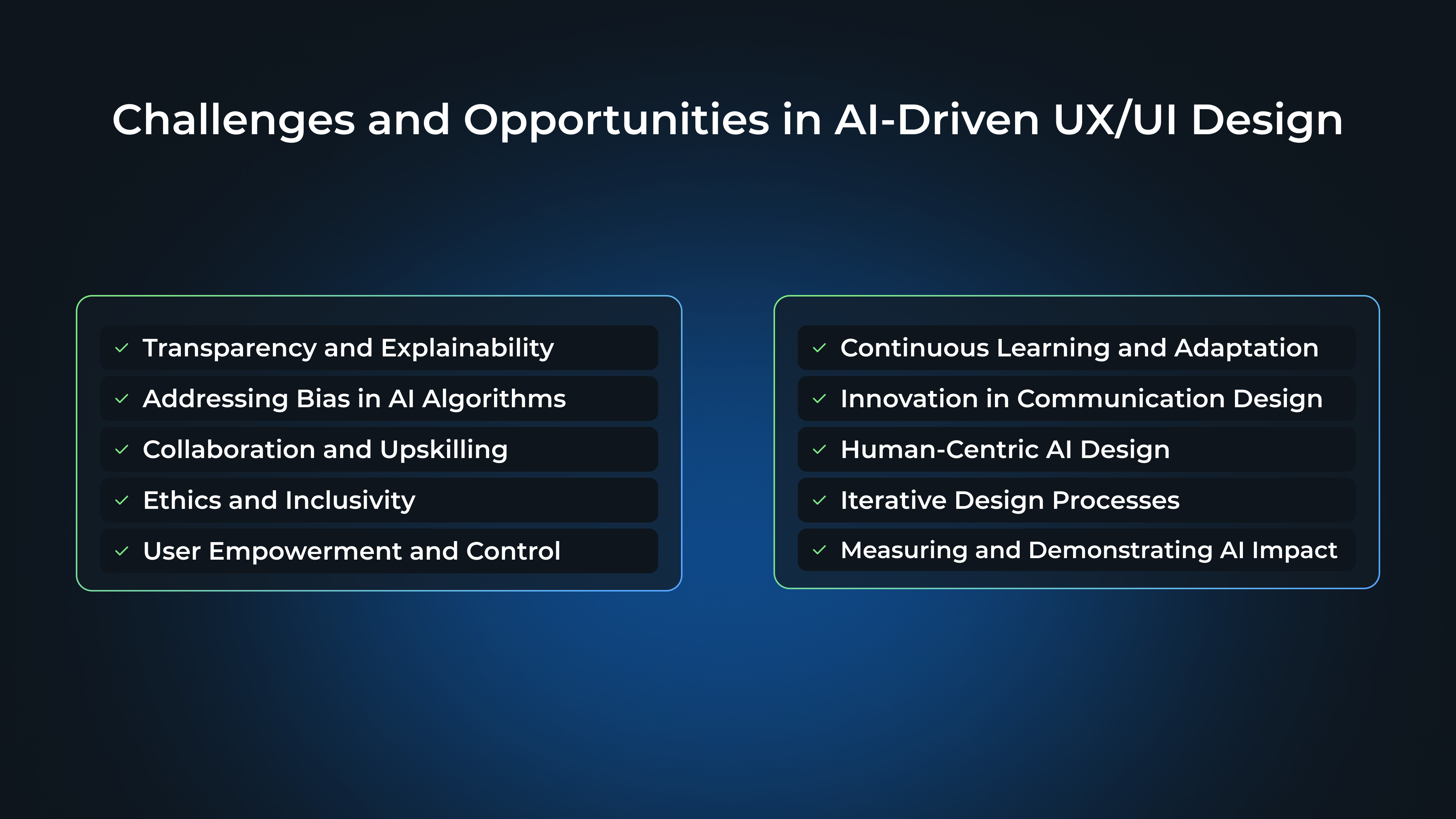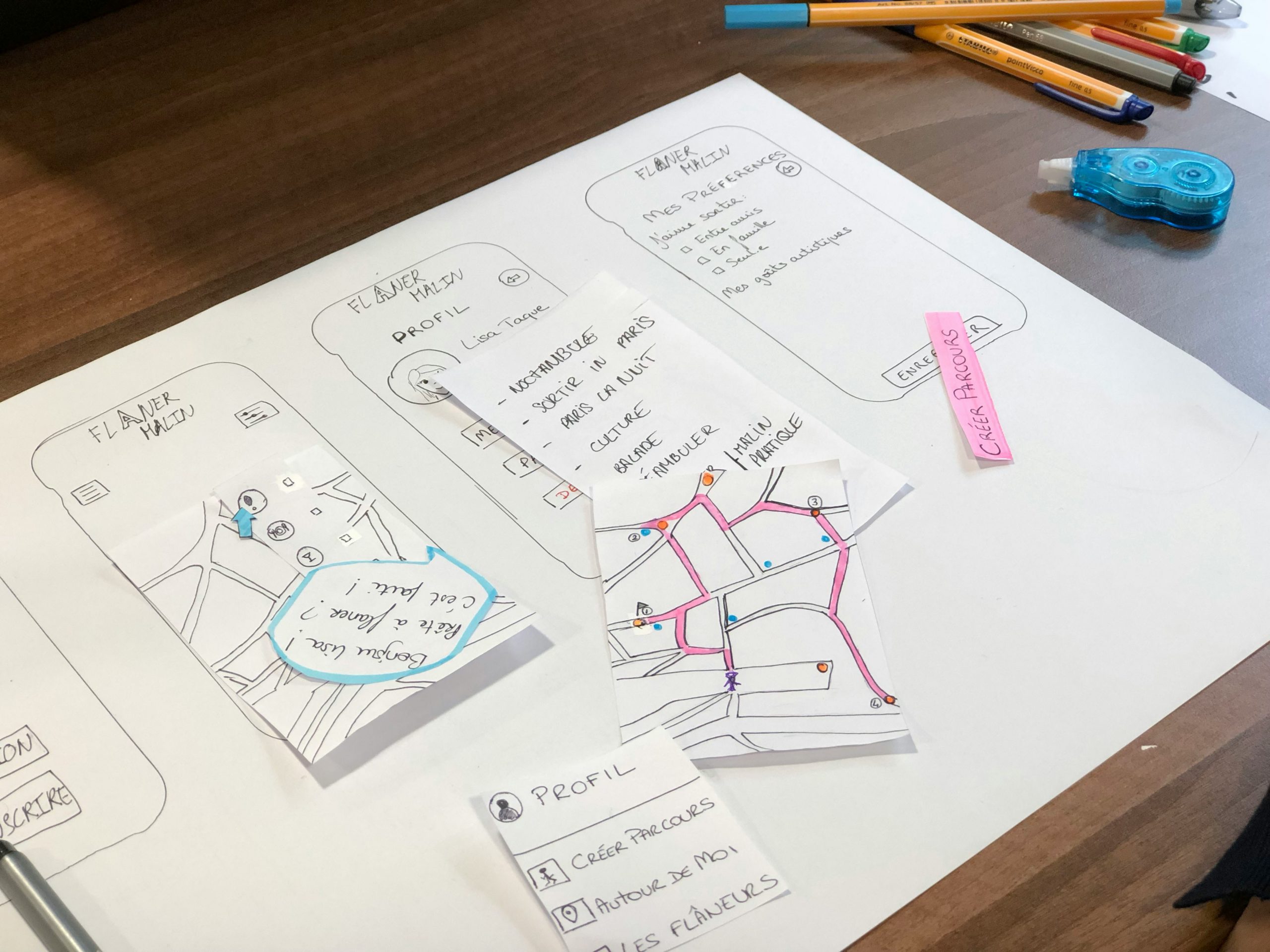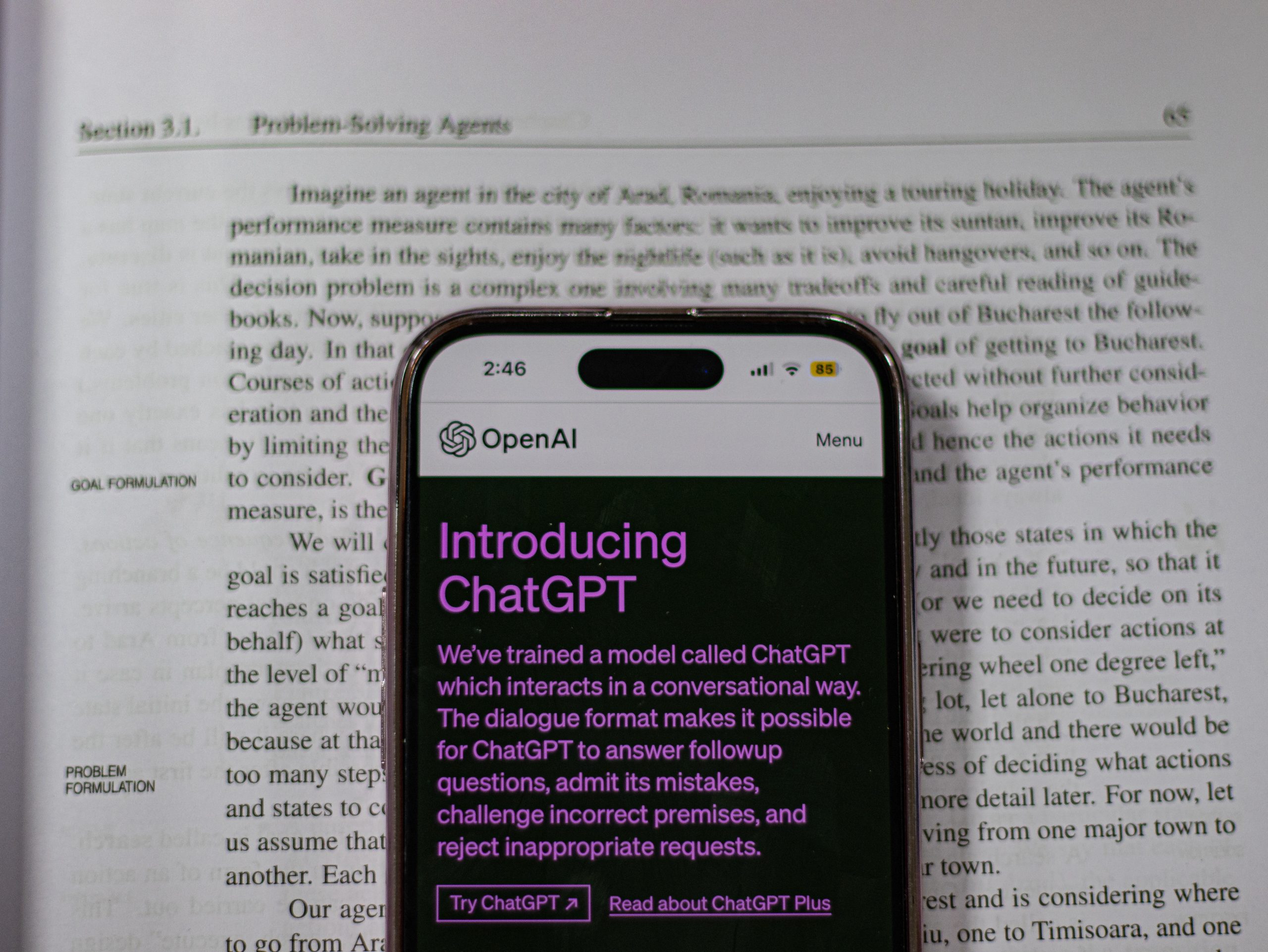We at WeSoftYou believe that the field of User Experience (UX) and User Interface (UI) design is constantly evolving, especially with the rapid advancements in Artificial Intelligence (AI) technology. AI is revolutionizing the way we design, interact, and experience digital products and services. In this article, we will explore the intersection of AI and UX/UI design, understand how AI enhances the design process, discuss the impact of AI on design trends, and explore the challenges and opportunities in AI-driven design. Let’s delve into the exciting world where AI meets UX/UI design!
AI and UX/UI Design
In the dynamic realm of UX/UI design, the integration of Artificial Intelligence (AI) stands as a transformative force, reshaping traditional approaches and elevating the user experience to unprecedented levels. AI, characterized by its capacity to simulate human intelligence and problem-solving skills, has already left an indelible mark on industries like healthcare, finance, and transportation. In the healthcare sector, AI analyzes medical data and aids in early disease detection, while in finance, predictive algorithms automate trading and detect fraud.
Transportation sees AI optimizing routes for autonomous vehicles. Now, delving into the nexus of AI and UX/UI design, the synergy becomes evident. AI empowers designers by offering personalized recommendations, predictive analytics, and intelligent automation, thereby enhancing user engagement and satisfaction. From interpreting user feedback to enabling natural language processing and automating mundane design tasks, AI not only streamlines the design process but also fosters a creative, user-centric approach.
As a software development company with a proven track record, WeSoftYou recognizes the immense potential of AI in transforming the design landscape. We are committed to staying at the forefront of technological advancements and incorporating AI into our design processes to deliver cutting-edge solutions to our clients.
In conclusion, the intersection of AI and UX/UI design opens up a world of possibilities. From data analysis and design recommendations to personalized experiences and task automation, AI has the potential to revolutionize the way designers create and optimize user interfaces. As technology continues to evolve, it is essential for designers to embrace AI as a powerful ally in their quest to deliver exceptional user experiences.
The Impact of AI on UX/UI Design Trends
AI-driven design trends are shaping the future of UX/UI design. With AI’s ability to analyze vast amounts of data, it can identify emerging patterns and predict future design trends. This capability allows designers to stay ahead of the curve and create visually appealing and user-friendly interfaces.
One of the ways AI is revolutionizing UX/UI design is through its assistance in generating innovative design concepts. By analyzing data from various sources, AI can identify common elements and combine them to create unique and aesthetically pleasing designs. This process not only saves time for designers but also opens up new possibilities for creativity and experimentation.
In addition to generating design concepts, AI-powered chatbots and virtual assistants are becoming increasingly common in UX/UI design. These intelligent systems provide personalized and interactive user experiences, enhancing user satisfaction. Chatbots can answer user queries, provide recommendations, and even simulate human-like conversations. Virtual assistants, on the other hand, can understand user preferences and adapt the interface accordingly, creating a truly personalized experience.
Furthermore, AI can analyze user behavior and preferences to optimize the user interface. By tracking user interactions, AI algorithms can identify areas where users struggle or get confused. This information can then be used to make informed design decisions, improving the overall user experience. For example, if AI detects that users often abandon a specific feature, designers can reevaluate its placement or functionality to make it more intuitive and engaging.
These AI-driven design trends not only enhance user satisfaction but also differentiate brands in a competitive market. By leveraging AI technologies, companies can create unique and memorable experiences that set them apart from their competitors. This differentiation not only attracts and retains users but also builds brand loyalty and trust.
WeSoftYou, as a software development company, understands the importance of staying up-to-date with these AI-driven design trends. Our team of experienced designers and developers keeps a pulse on the latest advancements in AI and UX/UI design to create cutting-edge digital products. By combining our expertise with AI technologies, we strive to deliver innovative solutions that exceed our clients’ expectations.
Challenges and Opportunities in AI-Driven UX/UI Design
Artificial Intelligence (AI) has revolutionized the field of User Experience (UX) and User Interface (UI) design, offering exciting opportunities to create more intuitive and personalized experiences for users. However, along with these opportunities, AI also presents a set of challenges that designers must navigate to ensure the successful integration of AI into UX/UI design.

One of the key challenges in AI-driven UX/UI design is the need for transparency and explainability. As AI systems become more complex and sophisticated, it becomes crucial for designers to make the decision-making process of AI algorithms transparent to users. Users should be able to understand how AI is influencing their experiences and have the ability to question and challenge the decisions made by AI systems. Designers must find innovative ways to communicate the role of AI in the design process, ensuring that users feel empowered and in control.
Another challenge lies in addressing the potential biases inherent in AI algorithms. AI systems learn from vast amounts of data, and if that data is biased, it can result in unintended discrimination. Designers must be vigilant in identifying and mitigating biases in AI algorithms to ensure fairness and inclusivity in the user experience. This requires a deep understanding of the data used to train AI models and implementing measures to counteract any biases that may arise.
Furthermore, the successful adoption of AI in UX/UI design requires collaboration and upskilling. Designers need to work closely with developers to understand the capabilities and limitations of AI technologies. This collaboration allows designers to explore new design possibilities and push the boundaries of what is achievable. Additionally, designers must continuously upskill themselves to stay updated with the latest advancements in AI and its applications in UX/UI design. This ongoing learning process ensures that designers can leverage AI effectively and harness its full potential to enhance user experiences.
At WeSoftYou, we recognize these challenges as opportunities to innovate and redefine the future of AI-driven UX/UI design. We believe that by addressing the transparency, bias, and collaboration challenges, we can create AI-powered systems that not only enhance user experiences but also prioritize ethics and inclusivity. Our team of talented designers and developers are committed to pushing the boundaries of AI-driven UX/UI design, constantly seeking new ways to create meaningful and engaging experiences for users.
The Future of AI in UX/UI Design
The future of AI in UX/UI design looks promising. Emerging technologies such as machine learning, natural language processing, and computer vision are reshaping the design landscape. These technologies enable designers to create intelligent interfaces that understand user intent, respond conversationally, and interpret visual information. As AI continues to evolve, we can expect more seamless and personalized user experiences across various digital platforms. The long-term implications of AI in UX/UI design are revolutionary, and WeSoftYou is at the forefront of harnessing these emerging technologies.
Emerging AI Technologies in Design
Technologies like generative design, emotional AI, and predictive analytics are making their mark on UX/UI design. Generative design algorithms can automatically produce multiple design solutions based on user preferences, constraints, and objectives. This means that designers can explore a wide range of design possibilities without spending excessive time and effort. By leveraging generative design, designers can find innovative solutions that they may have never considered before.
Emotional AI focuses on understanding user emotions and tailoring experiences accordingly. By analyzing facial expressions, tone of voice, and other emotional cues, AI systems can adapt the interface to match the user’s emotional state. For example, if a user is feeling stressed, the interface can provide calming colors and soothing animations to help alleviate their anxiety. Emotional AI has the potential to create more empathetic and human-like interactions, enhancing the overall user experience.
Predictive analytics leverages AI to anticipate user needs and behaviors, allowing designers to create proactive and contextually relevant interfaces. By analyzing user data and patterns, AI systems can predict what a user is likely to do next and provide relevant suggestions or actions. For example, if a user frequently orders pizza on Friday evenings, the interface can proactively offer pizza delivery options on Fridays. This level of personalization and anticipation can greatly enhance user satisfaction and engagement.
These technologies are transforming the way designers approach problem-solving and product creation. By leveraging AI, designers can tap into vast amounts of data and insights to inform their design decisions. This data-driven approach allows for more informed and validated design choices, leading to better user experiences.
The Long-Term Implications of AI in UX/UI Design
Looking ahead, AI will continue to shape the future of UX/UI design. As AI algorithms become more sophisticated and capable of understanding complex user needs, we can expect even more personalized, intuitive, and delightful user experiences. AI-powered systems will seamlessly adapt to users’ preferences, contexts, and behaviors, creating truly intelligent and empathetic interfaces.
The long-term implications of AI in UX/UI design are extensive, with the potential to redefine how we interact with digital products and services. Imagine a future where interfaces can understand and respond to our emotions, anticipate our needs, and provide tailored experiences that cater to our individual preferences. This level of personalization and adaptability has the power to revolutionize the way we engage with technology.
From our experience at WeSoftYou, we firmly believe that AI is revolutionizing the UX/UI design landscape. AI technology offers immense possibilities for designers to enhance user experiences, streamline design processes, and predict future design trends. As a software development company with expertise in AI-driven design, WeSoftYou is well-equipped to assist businesses in harnessing the power of AI for their UX/UI design needs. Contact us for a free consultation or project estimation, and let us help you create exceptional user experiences in the AI era.
FAQ
AI can enhance the UX/UI design process in numerous ways. One of the key benefits is its ability to analyze large datasets. By processing vast amounts of user data, AI algorithms can identify patterns and trends that humans may overlook. This allows designers to gain valuable insights into user behavior and preferences, enabling them to create more personalized experiences.
In addition to data analysis, AI can also generate design recommendations. By understanding user preferences and past interactions, AI algorithms can suggest design elements that are likely to resonate with users. This not only saves time for designers but also increases the likelihood of creating designs that are well-received by the target audience.
Furthermore, AI can automate repetitive tasks in the design process. This includes tasks such as resizing images, formatting text, and organizing content. By automating these mundane tasks, designers can focus on more creative and strategic aspects of their work, ultimately leading to more innovative and impactful designs.
AI-driven design trends are constantly evolving as technology advances. One prominent trend is the use of AI-powered chatbots and virtual assistants. These intelligent systems can interact with users, answer their questions, and provide personalized recommendations. Chatbots are increasingly being integrated into websites and mobile applications, enhancing user engagement and improving customer support.
Another AI-driven design trend is the generation of innovative design concepts based on emerging patterns and aesthetics. AI algorithms can analyze vast amounts of design data, such as color palettes, typography choices, and layout preferences, to identify emerging trends. Designers can then leverage these insights to create visually appealing and up-to-date designs that resonate with users.
Furthermore, AI is being used to optimize user interfaces for different devices and platforms. By analyzing user behavior and device capabilities, AI algorithms can adapt the design to provide the best possible user experience. This includes responsive design, adaptive layouts, and intelligent content prioritization.
While AI offers numerous benefits for UX/UI design, there are also challenges that need to be addressed. One of the key challenges is ensuring transparency and ethical design. AI algorithms can be complex and opaque, making it difficult to understand how they arrive at their recommendations. Designers need to ensure that the AI systems they use are transparent and explainable, so that they can trust the recommendations and make informed design decisions.
Another challenge is addressing potential biases in AI algorithms. AI systems learn from historical data, which may contain biases and prejudices. If these biases are not identified and addressed, they can perpetuate discrimination and inequality. Designers need to be aware of these biases and take steps to mitigate them, such as using diverse and representative training data.
Additionally, adopting AI in UX/UI design requires collaboration between designers and developers. Designers need to work closely with AI experts and developers to understand the capabilities and limitations of AI systems. This collaboration is crucial to ensure that AI is used effectively and appropriately in the design process.
The future of AI in UX/UI design is incredibly promising. Emerging technologies are reshaping the design landscape and opening up new possibilities. One such technology is generative design, which uses AI algorithms to automatically generate design options based on specified constraints. This can greatly speed up the design process and enable designers to explore a wider range of possibilities.
Another exciting development is emotional AI, which aims to understand and respond to users’ emotions. By analyzing facial expressions, tone of voice, and other cues, AI systems can adapt the user interface to better meet the user’s emotional needs. This can lead to more empathetic and engaging user experiences.
Predictive analytics is also playing a significant role in the future of AI in UX/UI design. By analyzing user data and behavior, AI algorithms can predict user preferences and anticipate their needs. This enables designers to create more personalized and intuitive user experiences, ultimately increasing user satisfaction and engagement.
As AI continues to advance, we can expect more intelligent, personalized, and empathetic user experiences. The possibilities are endless, and the future of AI in UX/UI design holds great potential for creating exceptional digital experiences.
Ready to explore the possibilities of AI-driven UX/UI design? Contact WeSoftYou for a free consultation or project estimation. Let’s create exceptional digital experiences together!





















